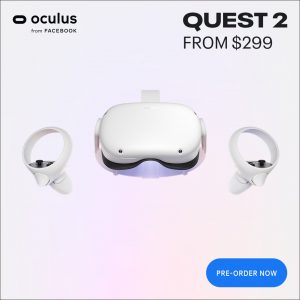This page is made for my big VR comparison video as a lot of these terms are used in that video or in any VR review video for that matter. It’s helpful to know these terms if you’re looking to buy your first VR headset in 2022. Scroll down for the terms!
PC VR
PC VR is where you’ll find the highest quality visuals and the most ambitious VR games like Asgard’s Wrath or Half-Life: Alyx. This does mean you’ll need a pretty powerful gaming PC to plug your headset into. So that’s gonna add to the price.
Standalone VR
A standalone VR headset is an all-in-one headset. It comes with all the hardware built-in like the processor and RAM to run content without the need of a PC.
Inside-Out Tracking & Outside-In (SteamVR)
Inside-out tracking is a method of positional tracking specifically for tracking the position of VR headsets and motion controllers. This is usually done with sensors or cameras built-in the headset. Headsets that use inside-out tracking are for example Meta Quest 2, Vive Cosmos, and HP Reverb G2.
Interpupillary distance (IPD)
This is the distance between the centers of the pupils of your eyes in millimeters. This is important to know because most headsets can be adjusted to your exact or close IPD value. This is needed for if you want the best visual clarity (and no headache).
PC VR
PC VR is where you’ll find the highest quality visuals and the most ambitious VR games like Asgard’s Wrath or Half-Life: Alyx. This does mean you’ll need a pretty powerful gaming PC to plug your headset into. So that’s gonna add to the price.
Standalone VR
A standalone VR headset is an all-in-one headset. It comes with all the hardware built-in like the processor and RAM to run content without the need of a PC.
Inside-Out Tracking & Outside-In (SteamVR)
Inside-out tracking is a method of positional tracking specifically for tracking the position of VR headsets and motion controllers. This is usually done with sensors or cameras built-in the headset. Headsets that use inside-out tracking are for example Meta Quest 2, Vive Cosmos, and HP Reverb G2.
Interpupillary distance (IPD)
This is the distance between the centers of the pupils of your eyes in millimeters. This is important to know because most headsets can be adjusted to your exact or close IPD value. This is needed for if you want the best visual clarity (and no headache).
Difference between 3DoF & 6DoF
This image says it all!

Foveated Rendering
This is a rendering technique that helps a headset (or PC) render fewer pixels in the peripheral areas while maintaining the highest resolution in the center of your vision.

Field of View (FOV)
FOV refers to how much you can see with your eyes in the VR headset. Lower FOV will usually give you more of a ski-goggles look as you’ll see black edges around the screens. Human field is somewhere around 210°×150°, which is not yet achieved on a VR headset.
HMD
Sort for Head-mounted Display, a.k.a. VR headset 🙂
If you have any suggestions or improvements for this page, feel free to let me know cas[at]casandchary.com



